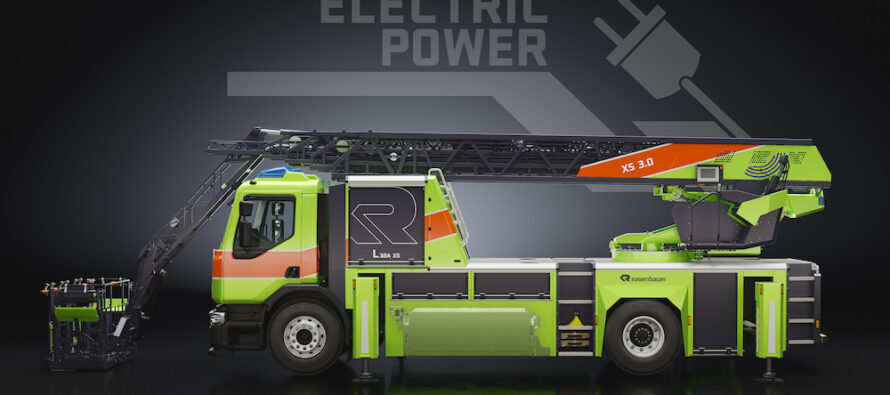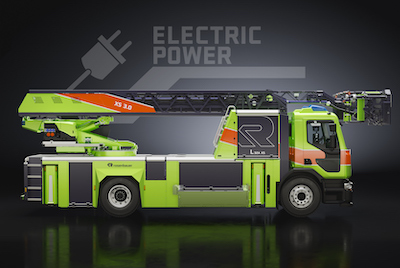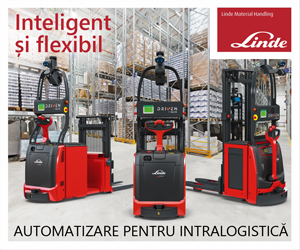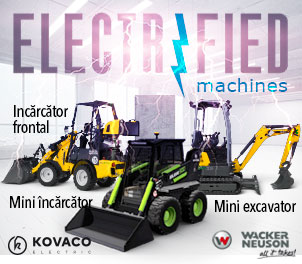Rosenbauer implements the first electric L32A-XS on a Volvo FE Electric

Related Articles
Rosenbauer is working vigorously on expanding the electric vehicle fleet for fire departments. After the RT tank firefighting vehicle and a logistics vehicle, the first L32A-XS aerial ladder is now also being electrified. The top priority of the development engineers is to make the electric aerial ladder just as functional, powerful, and reliable as the proven standard aerial ladder and to ensure the same ease of operation, serviceability, and spare parts availability. That’s why only high-quality OEM components are used for the electric aerial ladder: the ladder set of the proven L32A-XS and the series chassis of the Volvo FE Electric.
Same technology, same benefits
Both the classic and the electric L32A-XS are based on the same aerial ladder technology from Rosenbauer Karlsruhe and offer the same firefighting tactical benefits. The aerial rescue structure is largely identical, but the drive concept differs significantly. While the classic XS is powered by an internal combustion engine, the electric aerial ladder has three electric motors: two for the traction drive and one for aerial ladder operation (ePTO with 70 kW). Power is provided by two or three lithium-ion batteries with a capacity of 66 kWh each.
 Sufficient energy on-board
Sufficient energy on-board
With battery capacities of 132 or 198 kWh, the electric L32A-XS has more than enough on-board energy to perform typical aerial ladder operations reliably and without interruptions. For example, a city deployment with a five-kilometer drive, one jacking operation, three ladder movements (load cycles), 30 minutes of light mast operation, including return trip, consumes about 20 kWh. The aerial ladder with two battery packs will then still have a “residual capacity”, with which up to four more such operations could be carried out. An operation on land (30 km drive to and from, two jacking operations, five ladder movements and one hour of light mast operation) consumes around 52 kWh. For an aerial ladder with three battery packs that’s enough power reserve for at least two more operations.
The battery packs can be charged with alternating current from standard industrial power sockets or at suitable direct current charging stations. An external supply can also be used during aerial ladder operation.
Experiences from regular operation
Rosenbauer has been working on the electrification of firefighting vehicles for more than seven years, and in autumn 2020 it launched the RT, the first new-generation tank firefighting vehicle. The Berlin fire department has been testing the RT in regular operation since February (Berlin Mitte and Suarez firehouses, from November Schönberg fire station) and has completed around 800 missions in the last eight months, more than 90% of which were purely battery-powered, without any power generated by the range extender. With their eLHF, the emergency crews are not only environmentally friendly but are also exposed to fewer exhaust and noise emissions at the operation site. This improves the working conditions around the vehicle, reduces stress levels, and, last but not least, benefits the local residents.
The know-how acquired in recent years in the field of high-voltage technology is now also being used in the development of the first electric aerial ladder. The prototype based on DIN EN 14043:2014 and EN 1846 will be presented in summer 2022. Schutz & Rettung Zürich, the largest civil rescue organization in Switzerland, is the first lead customer for the test operation. Rosenbauer is thus once again underscoring its leading role as a trendsetter in the firefighting industry and, with the first electric L32A-XS, is now also showing in the aerial rescue sector what firefighting vehicles will look like in the future.

















